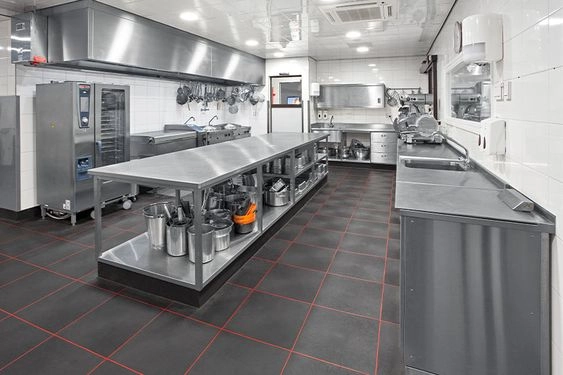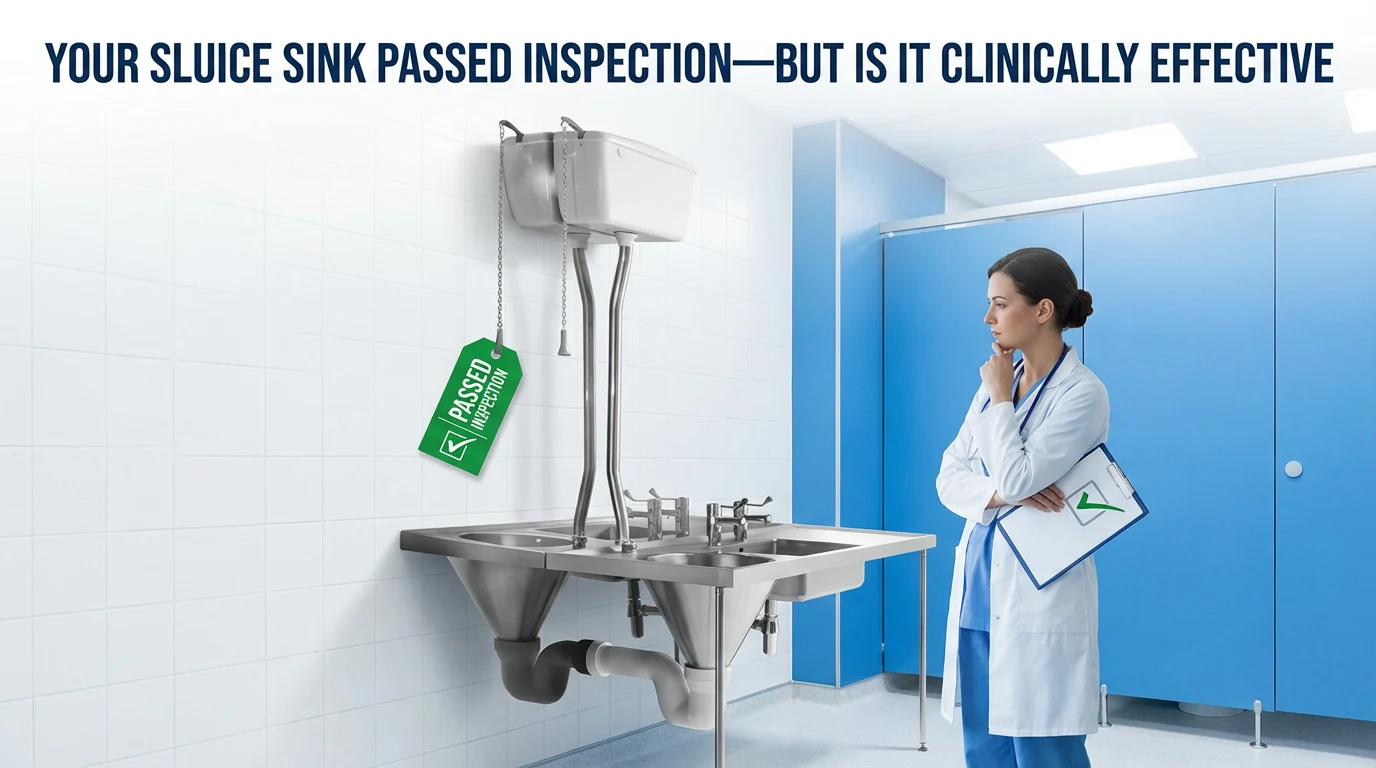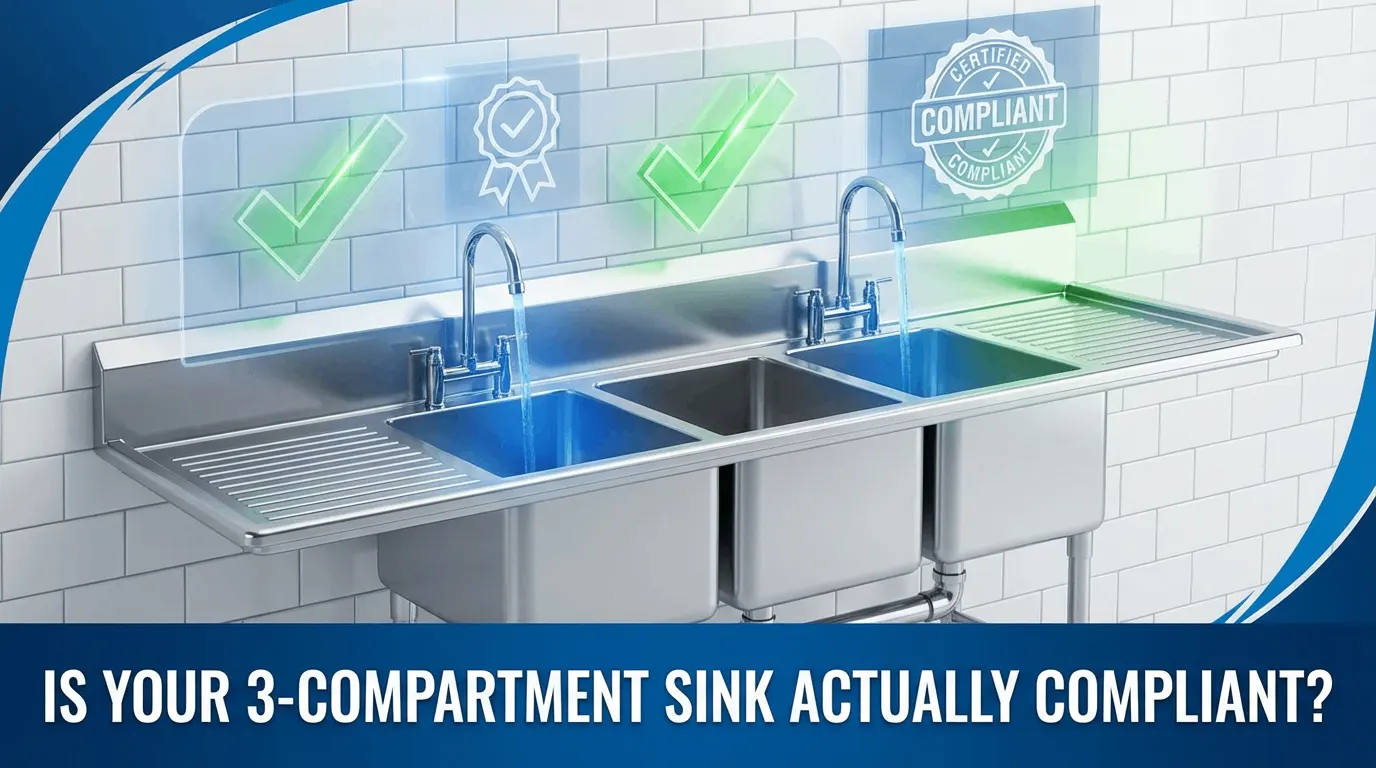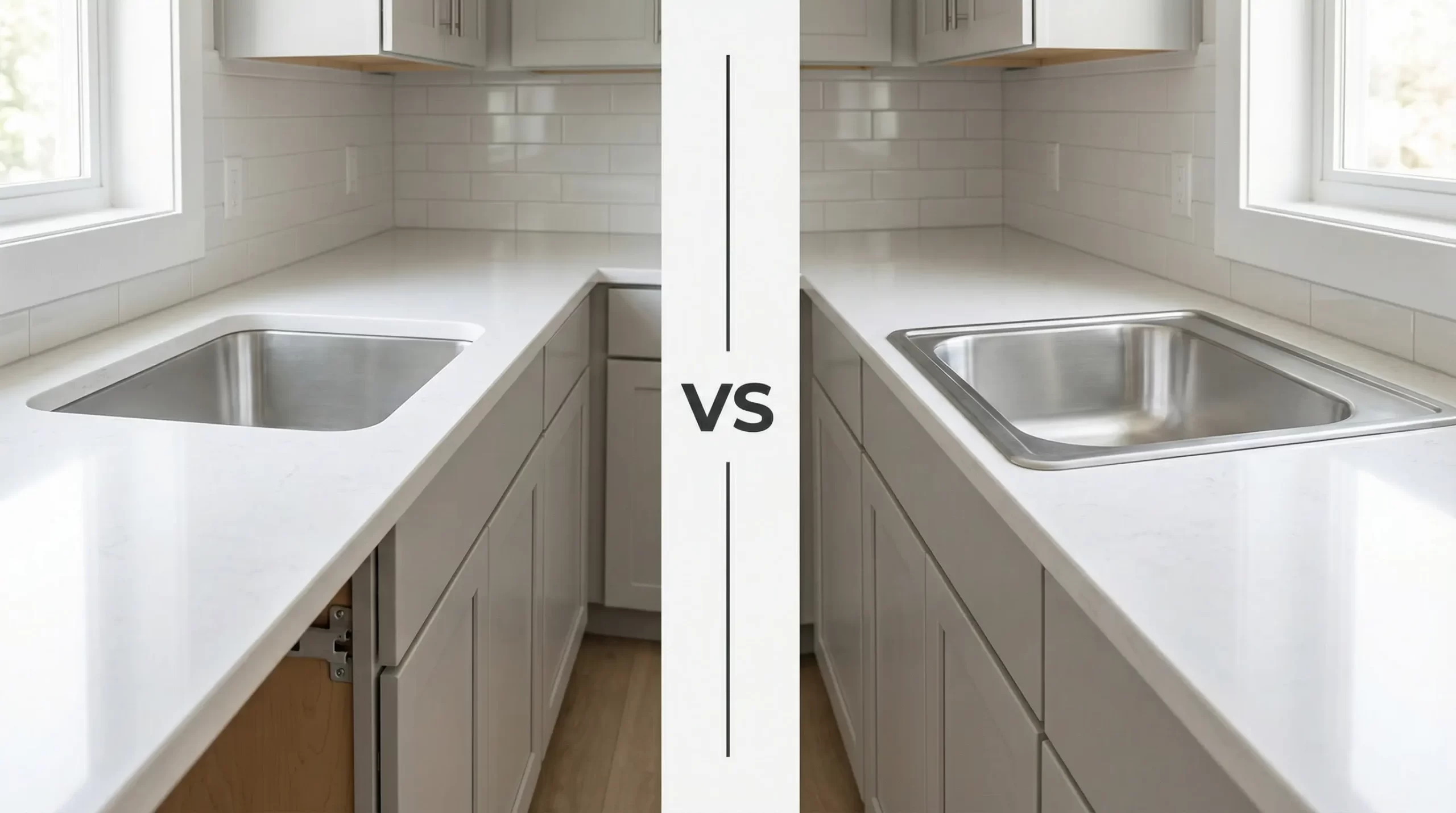What to Look for When Buying Sinks Kitchen Stainless in 2025
As we approach 2025, stainless steel kitchen sinks are transforming through sustainability mandates, technological integration, and evolving safety standards. For professionals in food service, engineering, and wholesale distribution, understanding these changes is critical for making informed purchasing decisions that balance performance, longevity, and value.
This guide provides an objective analysis of what truly matters when selecting sinks kitchen stainless for commercial or high-end residential applications. With sinks kitchen stainless maintaining over 60% market share due to their unmatched durability and hygiene properties, choosing the right solution requires careful consideration of your specific needs.
The Modern Buyer’s Decision Framework
Let’s structure this guide around the actual decision-making process professionals follow:
Step 1: Define Your Application Requirements
Before evaluating products, precisely define your operational needs:
- Environment type: Commercial kitchen, medical facility, residential high-end, industrial plant
- Usage intensity: Light (residential), medium (cafes), heavy (24-hour restaurants), extreme (food processing)
- Regulatory requirements: NSF/ANSI 2, ADA compliance, local health codes
Professional Tip: In 2025, 78% of sink failures stem from mismatched applications. A hospital handwashing station has fundamentally different requirements than a restaurant three-compartment sink.
When selecting sinks kitchen stainless, consider whether you need specialized configurations like a floor sink for industrial settings, a wall mount sink for space-constrained environments, or a double bowl sink for residential kitchens.
Step 2: Material Science Advancements for 2025
Beyond Basic Grade Comparisons
While 304 and 316 stainless remain industry standards, 2025 introduces meaningful innovations:
| Material Option | Key 2025 Developments | Best Applications |
|---|---|---|
| 304 Stainless | Improved nitrogen content (0.1-0.15%) for better formability | Residential, light commercial |
| 316/L Stainless | Molybdenum content increased to 2.5-3.0% for enhanced chloride resistance | Commercial kitchens near saltwater |
| New Generation Alloys | 2205 Duplex steel gaining traction; 35% stronger than 316 | Food processing plants |
| Recycled Content Alloys | ASTM A1063-23 standard certifies ≥85% recycled content | Sustainability-focused projects |
Industry Insight: Duplex stainless steel adoption in commercial sinks has grown 22% year-over-year as food processing facilities seek longer service intervals.
Gauge Matters More Than Ever
The 2025 market sees a strategic shift in gauge selection:
- 16-gauge (1.5mm): Now the commercial standard for high-traffic areas
- 18-gauge (1.2mm): Appropriate for medium-use residential and light commercial
- 20-gauge (0.9mm): Only suitable for decorative or extremely low-use applications
Critical Note: Proper gauge selection reduces lifetime maintenance costs by up to 37% according to Foodservice Equipment Report’s lifecycle analysis. For high-intensity applications like a commercial three-compartment sink, 16-gauge provides the necessary durability.
When evaluating sinks kitchen stainless, pay attention to the gauge specifications—many manufacturers list “commercial grade” without specifying the actual gauge. True commercial-grade sinks should be 16- or 18-gauge for workstations, utility sinks, or commercial kitchen sinks.
Step 3: Design Innovations Impacting Performance
Smart Integration Capabilities
True 2025 advancements—not marketing buzzwords:
- Water monitoring systems: Embedded sensors track usage patterns and potential leaks
- Hygiene verification: UV-C sanitation systems integrated into sink design
- Ergonomic intelligence: Adjustable height mechanisms with usage analytics
Real Implementation: Major hotel chains report 28% fewer slip/fall incidents after implementing height-adjustable sinks with usage monitoring in staff areas.
Sustainable Manufacturing Practices
Look for these verifiable credentials:
- Environmental Product Declarations (EPDs): Third-party verified lifecycle assessments
- Zero-waste manufacturing: Facilities achieving TRUE Zero Waste certification
The market for eco-friendly sinks kitchen stainless is expanding rapidly, with sustainable options now representing 35% of commercial sink purchases.
Workstation Integration
Modern sinks kitchen stainless increasingly serve as workflow hubs:
- Integrated cutting boards: For prep sinks in commercial kitchens
- Tool holders: Specifically designed for restaurant sinks
- Drainboard extensions: Critical for commercial kitchen sink stations
Leading manufacturers like Xinhe have developed workstation sinks with modular accessories that adapt to changing operational needs, significantly improving kitchen efficiency in both commercial and high-end residential settings. Xinhe team‘s approach to workstation kitchen sinks demonstrates how thoughtful design can transform a basic utility sink into a productivity center.

Step 4: Quality Assessment Methodology
What to Actually Inspect (Not Just Trust Marketing Claims)
- Weld quality: Seamless laser welding vs. traditional spot welds
- Sound insulation: Minimum 2mm undercoating with viscoelastic properties
- Surface finish consistency: Measured in Ra values (0.3-0.5 microns ideal)
- Radius testing: Minimum 4mm internal radius at corners
Professional Tip: Bring a magnet to your supplier visit. Weak magnetic response indicates proper austenitic structure.
When evaluating sinks kitchen stainless, inspect the radius at corners—many budget options use sharp 90-degree angles that trap debris. Commercial-grade sinks should feature generous radii, especially important for three-compartment sinks.
Step 5: Total Cost of Ownership Analysis
Smart procurement requires looking beyond initial price:
| Cost Factor | Short-Term View | Long-Term Impact (5+ years) |
|---|---|---|
| Initial Purchase | $400-$1,200 | Represents 15-25% of total cost |
| Maintenance | $50-$100/year | 30-40% of total cost |
| Downtime | Not considered | 25-35% of total cost |
Data Point: Restaurants using properly specified sinks experience 63% less operational disruption according to National Restaurant Association’s 2024 study.
When calculating ROI for sinks kitchen stainless, consider these often-overlooked factors:
- Water efficiency: Advanced drain systems reduce water usage by 18-25%
- Labor savings: Well-designed workstation sinks decrease employee movement by 30%
- Maintenance intervals: Premium materials extend service life between deep cleanings
For commercial applications like restaurant sinks, the cost of operational downtime often exceeds the initial purchase price within the first year.
Step 6: Supplier Evaluation Criteria
When vetting manufacturers, focus on these often-overlooked factors:
- Engineering capability: In-house metallurgists and product designers
- Testing facilities: Independent validation of corrosion resistance claims
- Customization process: Structured engineering review vs. simple order-taking
- Regulatory expertise: Understanding of evolving global standards
Industry Standard: Leading suppliers now provide Material Compliance Certificates with every shipment.
Xinhe Stainless Steel exemplifies the modern supplier approach with their comprehensive R&D capabilities and global manufacturing footprint. Our four factories across China and Vietnam enable them to offer competitive pricing while maintaining quality standards, particularly valuable for international buyers navigating complex tariff landscapes.
Making Your Decision
Use this evidence-based checklist when evaluating options:
- Verified material certification (mill test reports available)
- Appropriate gauge for actual usage intensity
- NSF/ANSI 2 certification for food service applications
- Minimum 4mm internal radius at all corners
- Sound insulation rated for commercial environments
- Clear warranty terms covering material AND workmanship
When selecting sinks kitchen stainless, consider these additional application-specific factors:
For Commercial Kitchens:
- Three-compartment sink configuration meets local health codes
- Adequate water temperature maintenance for sanitation
For Residential Applications:
- Undermount sink installation compatible with countertop material
- Noise reduction features for open-concept spaces
For Industrial/Utility Applications:
- Floor sink or wall mount sink properly rated for expected loads
- Chemical resistance appropriate for cleaning agents used
When evaluating utility sink options, pay particular attention to the mounting hardware and structural reinforcement—industrial applications demand more than standard residential sink construction.
Implementation Considerations
Installation Best Practices
Proper installation significantly impacts sink performance:
- Countertop preparation: For undermount sinks, ensure adequate support structure
- Plumbing alignment: Commercial sink drain configurations must match local codes
- Sealing techniques: Prevent water intrusion behind wall mount sinks
Professional Tip: Always request installation specifications from the manufacturer—generic instructions often miss critical details for specific sink types.
Maintenance Protocols
Develop appropriate cleaning procedures based on sink type:
- Daily: Non-abrasive cleaners for stainless steel sink surfaces
- Weekly: Deep cleaning of drain traps and overflow mechanisms
- Monthly: Inspection of mounting hardware and structural integrity
Critical Note: Using inappropriate cleaners on sinks kitchen stainless can damage protective oxide layers, accelerating corrosion. Always follow manufacturer recommendations.

Industry-Specific Applications
Food Service Environments
In restaurant kitchens, sinks kitchen stainless must withstand constant heavy use:
- Three-compartment sinks: Must meet specific dimensions for proper washing, rinsing, and sanitizing
- Prep sinks: Should feature generous workspace and integrated tool storage
- Bar sinks: Require compact designs that maximize limited space
Data Point: Properly configured commercial kitchen sinks reduce cross-contamination incidents by 41% according to FDA food safety studies.
When outfitting a restaurant sink station, consider workflow efficiency—positioning the three-compartment sink too far from dishwashing areas creates unnecessary movement.
Healthcare Facilities
Medical environments demand specialized sink requirements:
- ADA compliance: Critical for handwash sinks in patient care areas
- Antimicrobial surfaces: Increasingly standard for healthcare sinks
- Touchless operation: Essential for infection control in medical sinks
Regulatory Update: New 2025 CDC guidelines recommend UV-C sanitation systems for healthcare hand sinks in high-risk areas.
For medical applications, sinks kitchen stainless must meet stringent hygienic standards beyond typical commercial requirements.
Industrial Settings
Manufacturing and workshop environments present unique challenges:
- Chemical resistance: Essential for industrial floor sinks exposed to harsh substances
- Structural strength: Required for heavy-duty utility sinks
- Drain capacity: Critical for shop sinks handling large debris volumes
Professional Tip: In industrial applications, consider adding secondary containment systems for floor sinks handling potentially hazardous materials.
When selecting sinks for industrial use, prioritize structural integrity over aesthetics. A garage utility sink or factory floor sink must withstand constant heavy use without compromising safety.
Conclusion
In 2025, the most successful buyers view sink procurement as a strategic partnership rather than a simple transaction. The right supplier should offer:
- Technical expertise to match products to specific operational needs
- Transparency about material sources and manufacturing processes
- Lifecycle cost analysis, not just price quotes
- Responsiveness to evolving regulatory requirements
Final Thought: The most valuable sinks kitchen stainless option isn’t necessarily the most expensive one, but the one that perfectly aligns with your specific operational requirements. In 2025, successful procurement means moving beyond basic product features to strategic partnership with suppliers who understand your industry’s evolving demands.
With Xinhe Stainless Steel’s focus on innovation, quality control, and professional OEM/ODM solutions, you gain a partner who can deliver reliable performance and long-term value across both residential and commercial applications.






